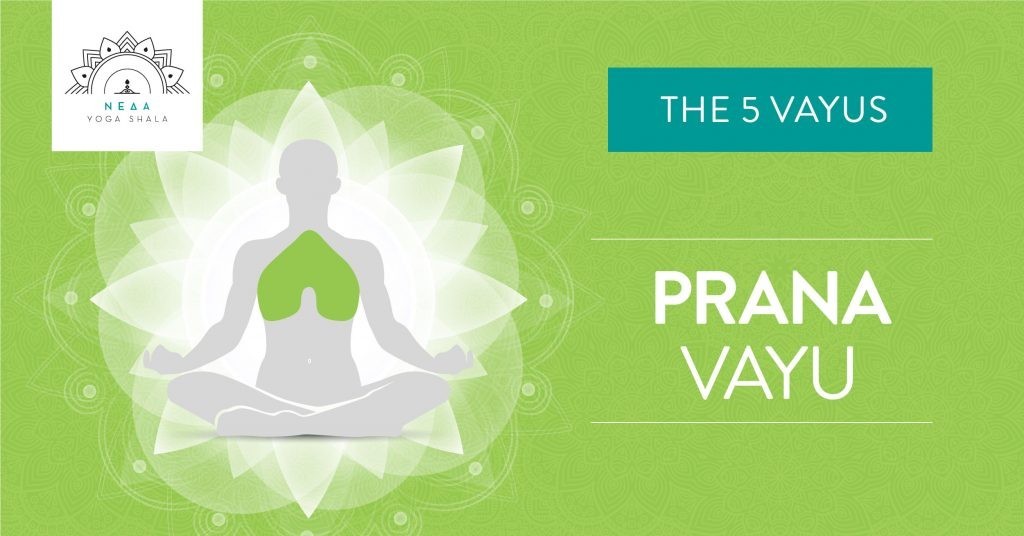
Prana Vayu
Prana Vayu means “the wind that moves forward”, and basically, it complements the Apana Vayu, by moving in the opposite direction. The Prana Vayu is responsible for the intake, while the Apana for the expulsion. It controls the processes through which we take energy into the body, the most dominant of which are the breath and the intake of food and water.
The Prana Vayu corresponds to the element of Air and to the Anahata Chakra. Νot only does it supply the most important life ingredients, but it also provides information. Through our five senses, we become the recipients of the images, sounds and ideas which produce thoughts and feelings. So, this is about external stimuli as much as it is about internal focus, filtering, concentration and consciousness.
When the Prana Vayu is in balance, the person holds a well-rounded perception of a world that provides a myriad of choices, which nevertheless, the person is capable to handle. We should not forget that information hits us unfiltered and with enormous speed, a fact which requires not only its processing, but also the ability to withdraw our senses from constantly receiving stimuli for a shorter or longer period of time. Failure to do that can produce feelings of fear, insecurity and stress, which can lead to heart and breathing issues.
Out of all the yogic practices, pranayama is the one that affects the Prana Vayu in the most direct manner. The Bhastrika technique for example, provides us with energy, cleanses the respiratory system, supports blood circulation, and strengthens the nervous system. Some of the asanas that connect us to the Prana Vayu are backbends, such as urdhva mukha shvanasana and urdhva dhanurasana.